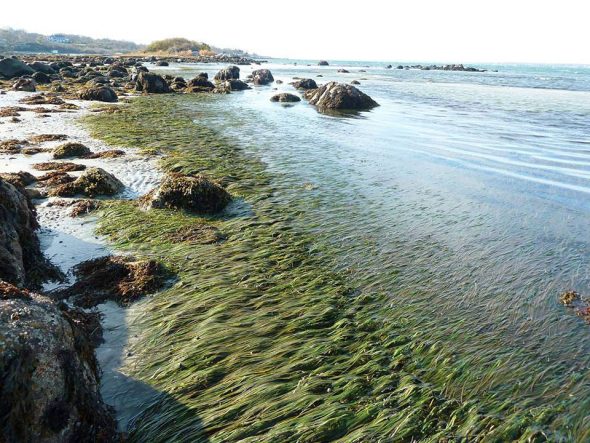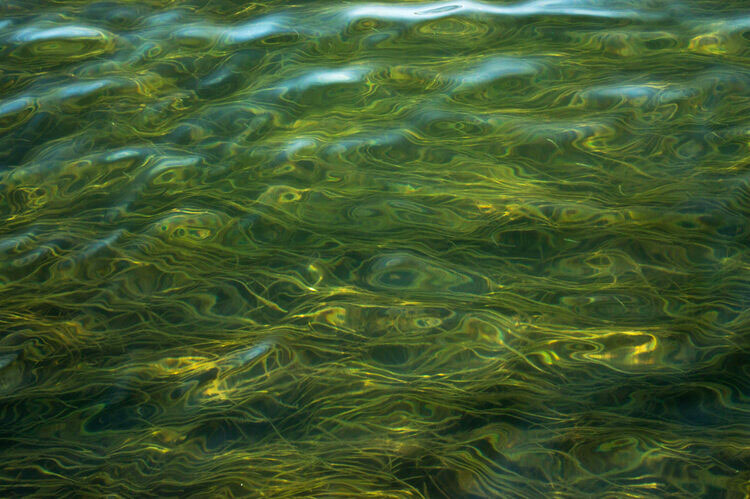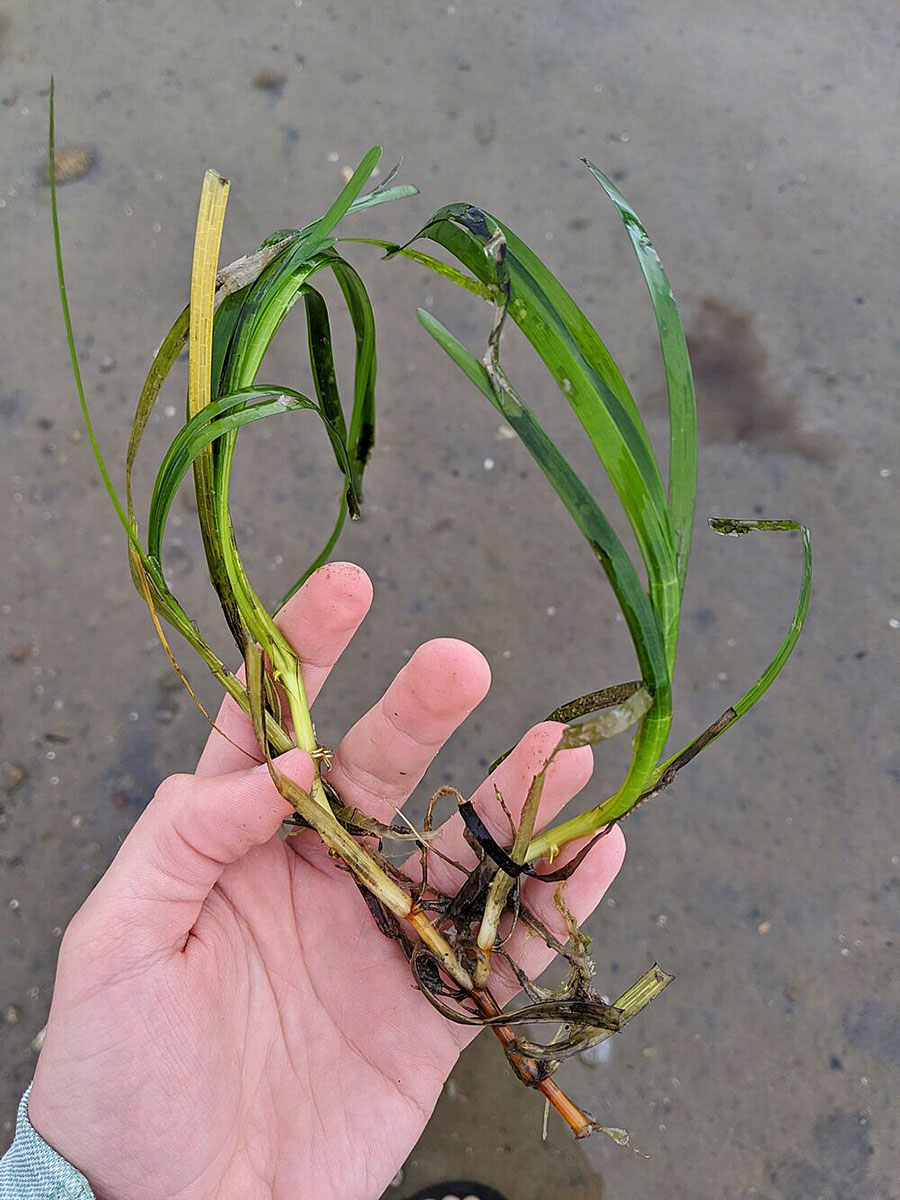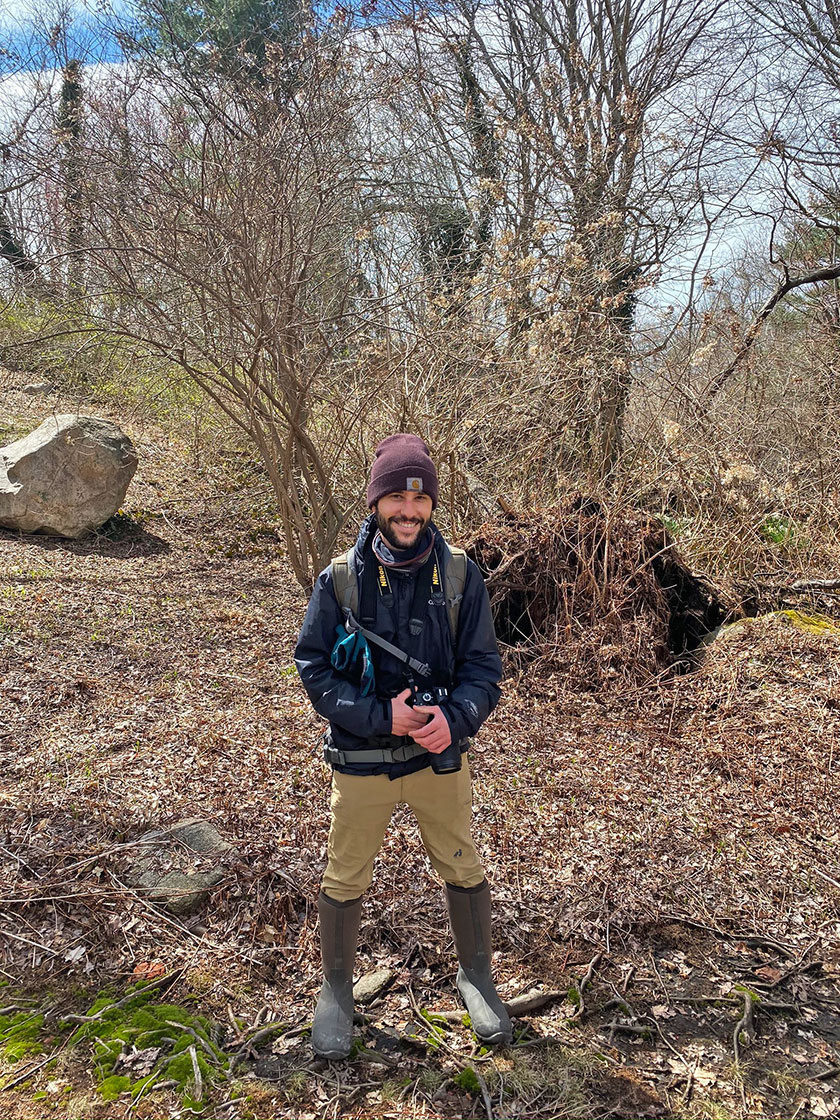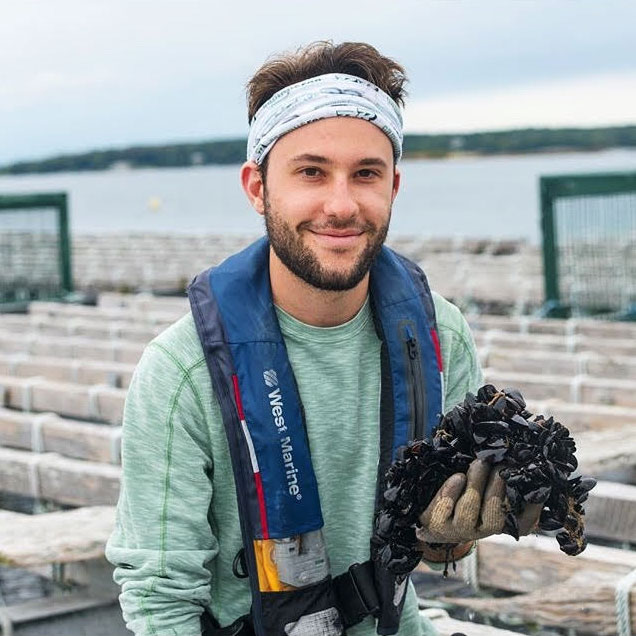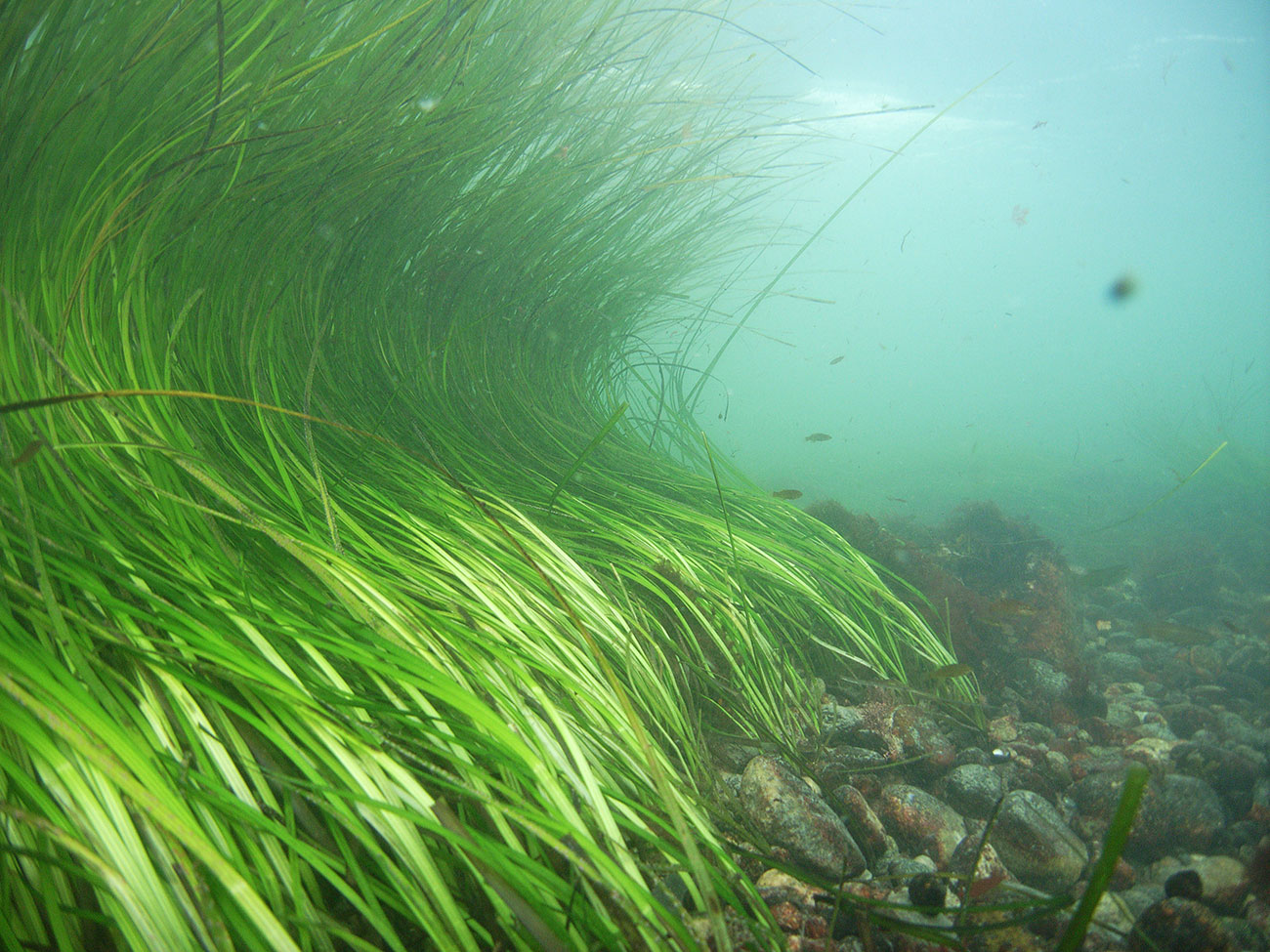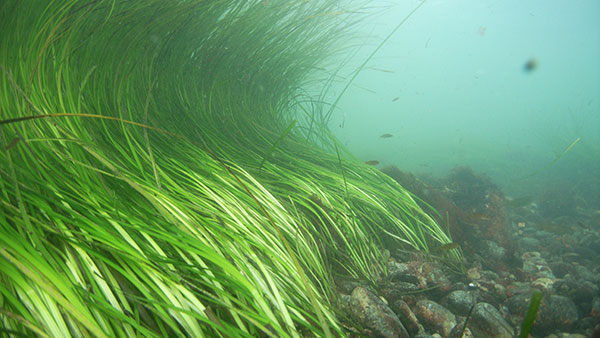Seagrass
Commonly mistaken for seaweed, seagrass is a flowering plant complete with roots, stems, and flowers that is adapted to life underwater. Globally, there are about 60 species of seagrass. The one most abundant in Long Island Sound and around Fishers Island is eelgrass (Zostera marina).
Found in depths up to 24 feet off the Island’s coastline, these eelgrass beds offer a number of high-value ecosystem services. They provide shelter and nursery habitat for species such as fish, lobster, shrimp and scallops. Eelgrass is a food source and foraging ground for marine mammals, birds, and sea turtles. With their root systems, seagrass meadows trap and stabilize sediments, helping to reduce coastal erosion. The long, dense blades of eelgrass further protect shorelines from erosion by dampening wave energy. Eelgrass improves water quality by extracting nitrogen and producing oxygen. Finally, seagrasses help to mitigate climate change by storing carbon, thus removing carbon dioxide from the atmosphere.
However, eelgrass and the invaluable services it provides are at risk. Seagrasses are under intense pressure globally, and this pressure is particularly acute in Long Island Sound.
Historically, eelgrass was so abundant here that it was harvested for use as insulation and fertilizer, but today fewer than 2000 acres remain. A number of factors have caused this decline in the extent of eelgrass beds. Meadows are threatened by boating and dredging activity, which can literally scrape eelgrass off the ocean floor. When excess nitrogen from wastewater and fertilizers flows into the Sound, it fuels the growth of harmful algae that kill fish, threaten human health, and block the sunlight seagrasses need to complete photosynthesis; this toxic effect is called eutrophication. Sediment that washes into the water from coastal construction and erosion can bury eelgrass and create turbidity that also blocks sunlight, further hampering their survival. Finally, climate change is also a threat, both through rising water temperatures and extreme weather events that can produce wave energy damaging to the beds.
This combination of threats has caused an unprecedented loss of eelgrass in Long Island Sound.
90% of the historic eelgrass range in Long Island Sound has disappeared. Of the remaining 10%, 20% is located in the waters around Fishers Island, and these meadows comprise 98% of the eelgrass remaining in the New York waters of the Sound.
Fishers Island is in a unique position and a key actor in the protection and recovery of eelgrass in Long Island Sound.
The Fishers Island Seagrass Management (FISM) Coalition
The Fishers Island Seagrass Management (FISM) Coalition is comprised of community representatives from Fishers Island institutions including the H.L. Ferguson Museum, Fishers Island Conservancy, Town of Southold, Island Community Board, Fishers Island Development Corporation, Fishers Island Club, Hay Harbor Club, Fishers Island Yacht Club, Harbor Committee, Fishers Island School, Pirates Cove Marina, and Fishers Island Ferry District, as well as from the following groups: commercial and recreational fishing, aquaculture, contracted ferries, landscapers, and divers.
The goal of the FISM Coalition is to establish a co-management process for the island’s seagrass meadows, one in which the island community shares seagrass management authority and responsibility with the Town of Southold and the New York State Department of Environmental Conservation (NYSDEC). Through joint investigation, the co-production of knowledge, shared learning, communication, and building trust, the FISM Coalition seeks to align community, state and local government seagrass management goals and objectives through a collaborative participation and decision-making process that is functional and inclusive.


